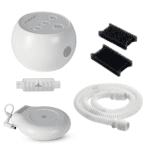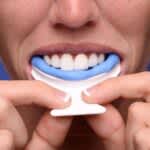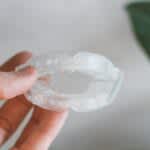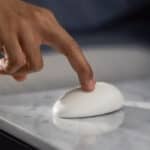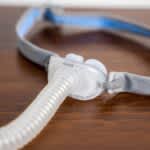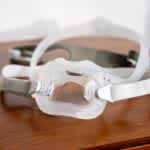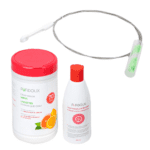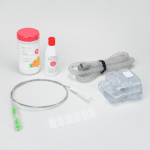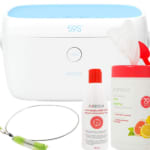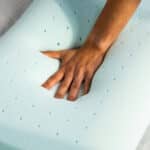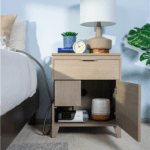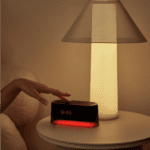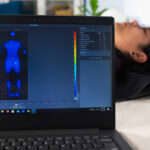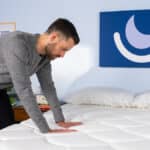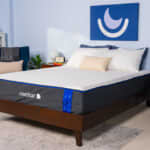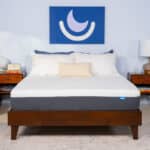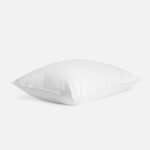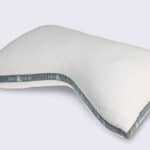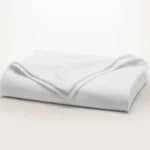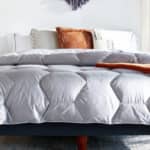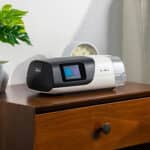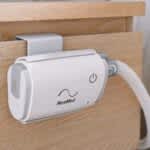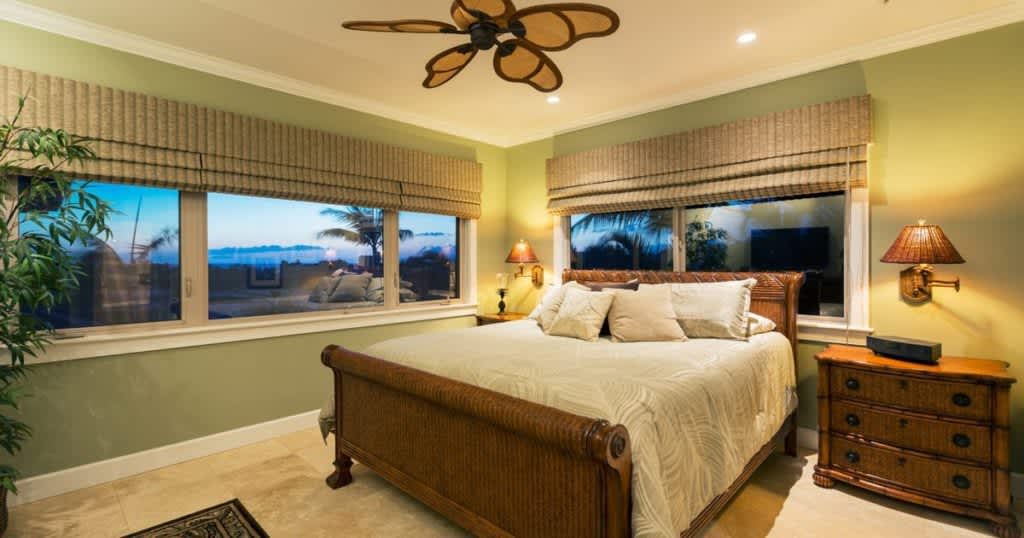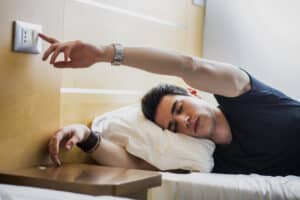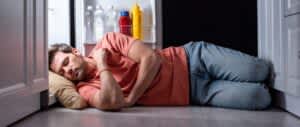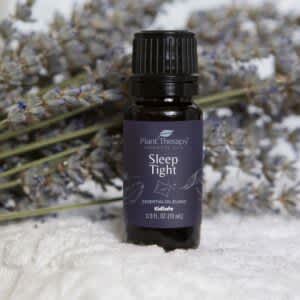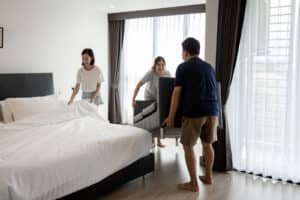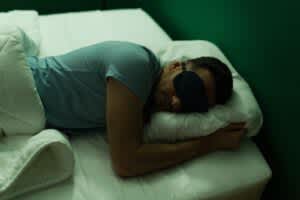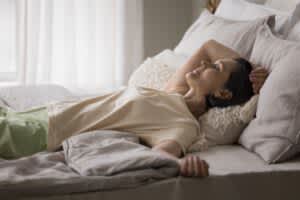Sleep is important for almost every part of the body, from the brain to the immune system, yet nearly half of the U.S. population has trouble sleeping. In fact, over one third of adults aren’t getting the recommended amount of sleep each night.
One potential barrier to a good night’s sleep is your sleep environment. Sleep environment refers to your bedroom and other nighttime surroundings. Your sleep environment includes important qualities, like the temperature as well as levels of humidity, light, and noise.
Having the right sleep environment can mean the difference between a night of restful, restorative sleep or one filled with uncomfortable tossing and turning.
Top 5 Tips for Sleep Environments

- 1 Set your room temperature for around 65 to 68 degrees.
- 2 Consider blackout curtains or shades to help keep your bedroom dark.
- 3 Try ear plugs or a white noise machine to mask disruptive noises.
- 4 Pick the right pillow and bedding materials that promote good airflow.
- 5 Find a comfortable mattress that provides you with the best support and cushioning.
The right sleep environment can mean the difference between a night of restful sleep or one filled with tossing and turning.
Elements of a Relaxing Sleep Environment
The best sleep environment is an area that’s cool, quiet, and dark with a comfortable space to lie down. Whether that’s in your bedroom, a hotel, or even a friend’s couch, optimizing the environment for sleep can help you get a better night’s rest.
Best Temperature for Sleep
For most people, the best temperature for sleep is approximately 65 to 68 degrees Fahrenheit. Bedroom temperature can have a major impact on your sleep. That’s why you may find it harder to sleep in a cold room or during the hot summer months when heat waves cause higher nighttime temperatures.
One link between temperature and sleep comes from the body’s circadian rhythms. Circadian rhythms help control daily cycles in the body. In response to environmental signals like sunlight, circadian rhythms regulate a wide range of biological functions, including sleep and wake times, metabolism, and body temperature.
Core body temperature is usually around 98.6 degrees Fahrenheit but fluctuates slightly throughout the day. When the sun goes down and darkness sets in, your body’s temperature starts to fall and your body begins to release more sleep hormones like melatonin. Core body temperature continues to drop as you sleep, reaching a low point sometime in the early hours of the morning.
This nightly drop in body temperature represents an important signal that tells your body it’s time for sleep. But if the sleep environment is too hot or too cold, you may have a harder time falling asleep and staying asleep.
Humidity and Sleep
High humidity can also have a negative impact on sleep, especially when combined with higher temperatures. For general comfort, most health experts recommend keeping indoor relative humidity levels somewhere between 30% and 50%.
Relative humidity refers to how much moisture is in the air relative to the temperature. High levels of relative humidity can make the air feel hotter than the reading on the thermometer might suggest. For example, high humidity can make 85 degrees Fahrenheit feel more like 95 degrees Fahrenheit.
When there’s a lot of moisture in the air, sweat evaporates more slowly. As a result, your body has a harder time cooling itself down. This interferes with the normal nightly drop in core body temperature that helps to promote sleep. During the hotter summer months, using air conditioning to cool the bedroom can help keep indoor humidity at a comfortable level.
Low humidity levels can occur during the colder winter months, in dry climates, and when using a heater. This lack of moisture in the air may also lead to uncomfortable symptoms like dry itchy skin and eyes. In areas where the humidity is very low, a humidifier can help add moisture back into the air.
How Noise Affects Sleep
Anyone who has been jolted awake by a sudden, loud sound understands the disrupting effect noise can have on sleep. The scientific research aligns, indicating that too much noise puts a damper on quality rest.
Boisterous neighbors, family members, and pets, a snoring partner, smartphone notifications, and street noise all pose challenges to keeping the bedroom quiet. Whatever the source, the effect of loud noise breaching the bedroom is typically the same. People exposed to noise at night tend to have lower quality sleep.
When a person sleeps, they cycle through three stages of non-rapid eye movement (non-REM) sleep and one stage of rapid eye movement (REM) sleep. The body and brain cycle through these stages multiple times throughout the night. Stage 3 of non-REM is associated with the deep sleep needed to feel fully rejuvenated.
Exposure to noise changes this normal pattern of sleep. People exposed to even low levels of noise experience more frequent sleep interruptions and spend less time in REM and stage 3 sleep. As a result, they’re less likely to feel well rested and recuperated in the morning.
The Impact of Light on Sleep
It’s no coincidence that you tend to feel alert after the sun rises and sleepy after the sun goes down. That’s because your body’s circadian rhythms try to synchronize to changes in levels of light to help control when you wake up and when you go to sleep.
Getting plenty of natural light in the morning can be a powerful tool to help you stay energized during the day and fall asleep at night. Bright light from the sun is especially effective.
However, in modern life, light exposure doesn’t usually end when the sun goes down. Indoor and outdoor lighting as well as TV, computer, and smartphone screens can keep you bathed in light right up until or after your usual bedtime.
Your body is most sensitive to bright light an hour after waking up, two hours before bedtime, and throughout the night. As a result, exposure to artificial light in the late evening can make it harder to fall asleep. This is especially true for devices that emit blue light, a wavelength that mimics the effect of sunlight.
Researchers are still working to understand exactly how different types and levels of light impact sleep. But health experts agree that a dark room is best for sleep. It’s also a good idea to dim your lights and avoid screen time at least 30 minutes to an hour before bed.
Tips to Improve Your Sleep Environment
There are several simple changes you can make to help transform your bedroom into the ultimate space for relaxing sleep.
- Keep the temperature just right: The best temperature for sleep is around 65 to 68 degrees Fahrenheit. Keep an eye on your thermostat and make sure your bedroom isn’t too hot or too cold to sleep comfortably. Remember, everyone has different comfort preferences, so figure out what works best for you.
- Consider blackout curtains: Keeping your bedroom dark can be hard for people who sleep during the day or whose bedroom is exposed to street lights or other light pollution. Installing light blocking shades or curtains can help to keep your bedroom dark.
- Try a white noise machine: White noise machines can help mask disruptive background noise. You can also use a fan or white noise app on your smartphone for a similar effect. Pink or brown noise are other types of sounds you can try.
- Experiment with eye masks and earplugs: An eye mask and a pair of ear plugs are simple, cost-effective options for controlling your exposure to light and sound during sleep.
- Change your smartphone settings: Phone notifications buzzing and beeping throughout the night can detract from a good sleep environment. Many phones have a ‘do not disturb’ option for nighttime hours. You can customize this setting to turn off all non-essential alerts while still allowing emergency calls to come through.
- Use blue light blocking glasses: TV, computer, and smartphone screens emit blue light that can disrupt your body’s circadian rhythm and make it harder to fall asleep. If you can’t avoid using a screen right before bed, try using blue light-blocking glasses that help prevent the blue light from reaching your eyes.
When putting together the ideal sleep environment, it’s not just about optimizing temperature, humidity, noise, and light. Having the right mattress, pillows, and bedding can also help you feel relaxed and ready for a good night’s rest.
- Find a better mattress: When searching for the best mattress, you may focus most of your attention on support and cushioning. But a mattress can also play an important role in regulating your body temperature during sleep. If you sleep hot, look for a mattress that promotes good airflow around the body and doesn’t retain too much body heat.
- Pick an appropriate pillow: Choosing the right pillow that meets your needs is another important part of creating a relaxing sleep environment. Look for a model that provides the right amount of loft and support to suit your sleep style.
- Choose the right bedding: Good bedding is key for helping you feel comfortable and regulating your body temperature as you sleep. Choose sheets with the right fabric and weave to suit the season and climate as well as your personal comfort preferences.
- Replace when needed: Bedding, mattresses, and pillows don’t last forever. After many years of use, a mattress starts to break down and may develop an indentation where you usually sleep. Likewise, pillows eventually lose their loft and can gather dust. Consider replacing your mattress, bedding, and pillows when they no longer provide a comfortable sleep surface.
References
Ask the Sleep Doctor
Have questions about sleep? Submit them here! We use your questions to help us decide topics for articles, videos, and newsletters. We try to answer as many questions as possible. You can also send us an email. Please note, we cannot provide specific medical advice, and always recommend you contact your doctor for any medical matters.


